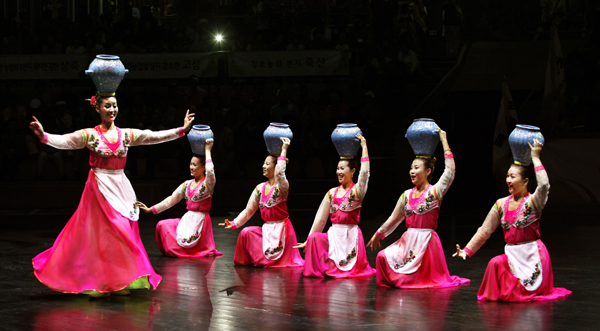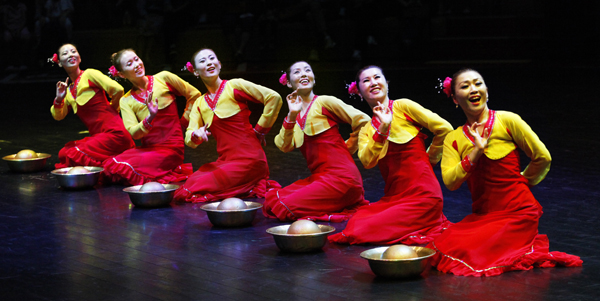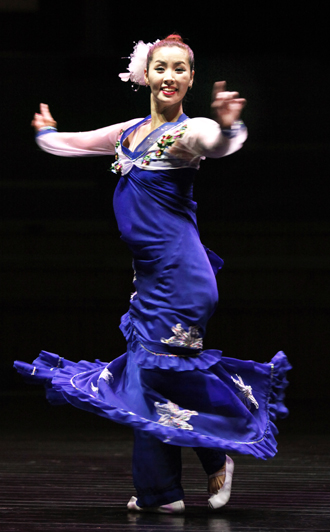North Korean dance troupe performs for unification

The members of Pyongyang Tongil Art Company performing the “Water Jug Dance,” a North Korean folk dance, at the Namsadang Stage in Anseong, Gyeonggi, on Sept. 14.
“My dear brothers and sisters, it’s really great to see you all here today,” said Bang Bun-ok, who was taking three roles on the stage that day - a singer, dancer and M.C. After Bang’s greetings, the dozens of people who filled the auditorium cheered and clapped, welcoming the Pyongyang Tongil Art Company.
Bang, the head of the troupe, wasn’t acting, though, when she greeted the audience in a North Korean accent. She, like all the members of the art company, is a defector from North Korea. The company was established in June 2007, and now there are nine members and two directors.
The troupe usually puts on dance and singing performances. Their fast-tempo dance routines while decked out in colorful costumes, including hanbok (traditional Korean clothing), amuses the South Korean audience throughout the show. Their best reaction comes from songs influenced by the folk songs of Korea’s northwestern provinces, which inspire the audience to tap their toes and move with the rhythms. They also sing South Korean pop songs and folk songs during the show.

The “Dondollari Dance” is a popular folk dance of Hamgyong Province.
All the members of the Pyongyang Tongil Art Company carry heartbreaking stories. One dancer, identified only as “A,” managed to flee to South Korea and join the company early this year. She said this was her second try. On her first try, she was caught in China and was sent back to the North. In North Korea, she was tortured for trying to defect and lost hearing in one ear. Despite such suffering, A made a second attempt to escape and this time was successful. She said it’s “like a dream, being able to live a dream [dancing on stage] in South Korea happily.”
During the early years of its establishment, Pyongyang Tongil Art Company only had one or two performances a month; however, having earned its reputation around the South, the group now performs about 20 times a month.

Jo Eun-hee’s dancing is a popular part of the Pyongyang Tongil Art Company.
“I believe North and South Koreans becoming one culturally through music and dance is the shortcut to unification,” said Bang, adding that she would “make endless efforts to become a pioneer of unification.”
The Pyongyang Tongil Art Company holds regular performances at the Namsadang Stage every weekend in Anseong. For information on its performances during weekdays, visit www.ptart.co.kr (Korean only).
By Park Sang-moon [moonpark@joongang.co.kr]










with the Korea JoongAng Daily
To write comments, please log in to one of the accounts.
Standards Board Policy (0/250자)